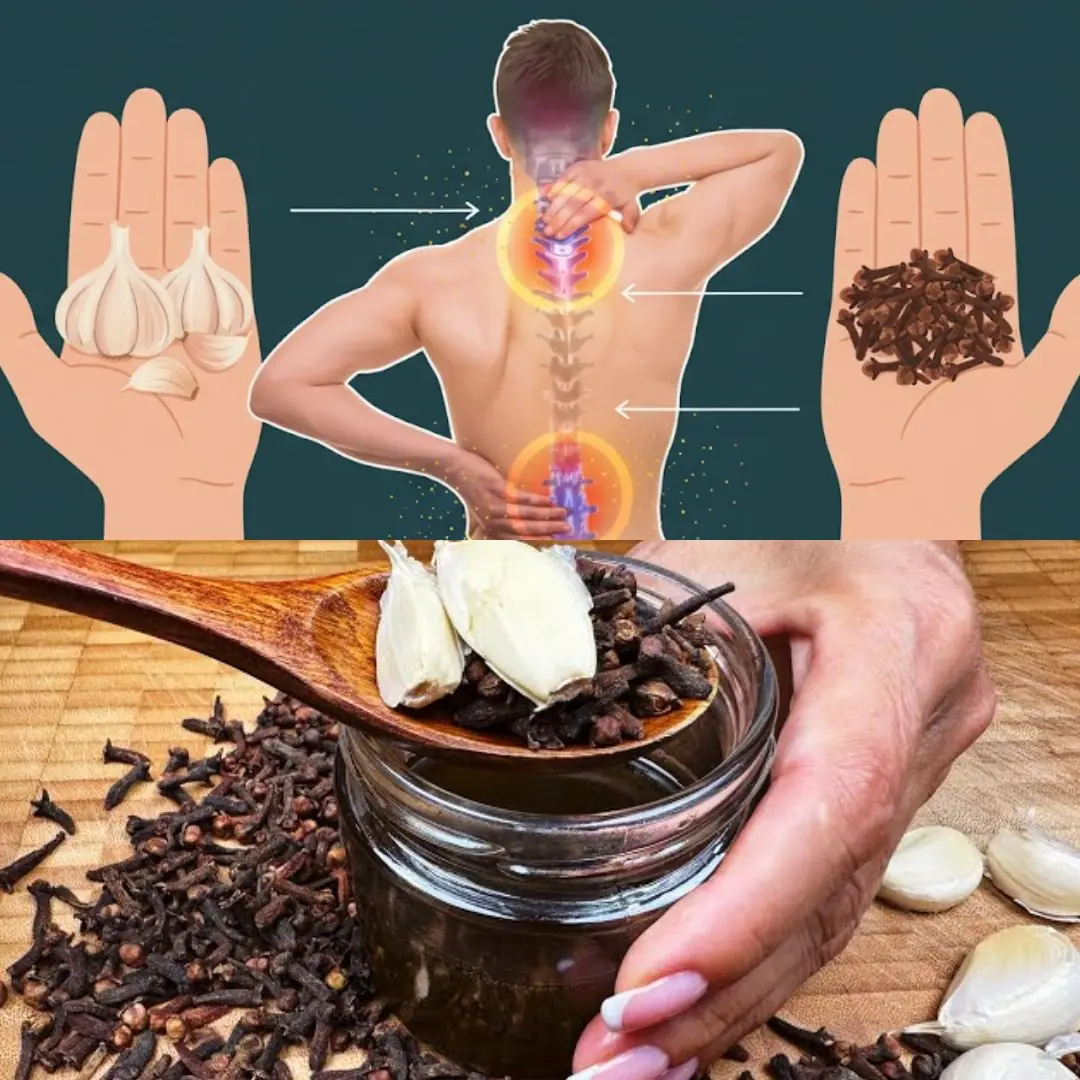
Turn Papaya Leaves Into a Powerful Homemade Detergent
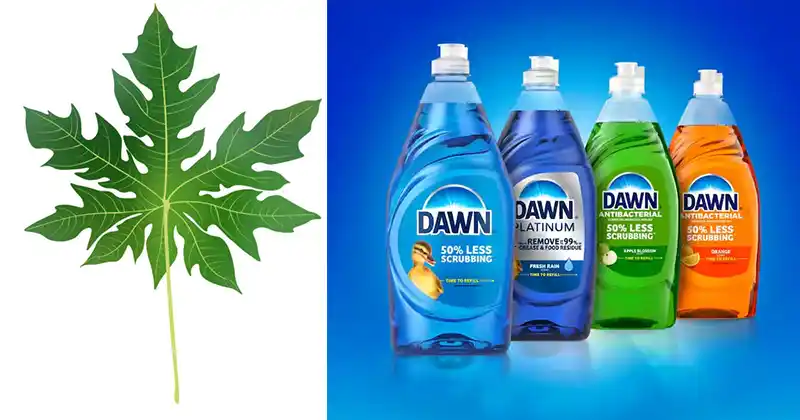
In today’s world, where the cost of household essentials keeps rising, many families are searching for budget-friendly and effective cleaning alternatives. Imagine being able to create a powerful, thick, foamy detergent using natural ingredients—many of which you might already have at home or growing in your backyard. This not only helps cut down expenses but also promotes a healthier, more eco-friendly lifestyle.
One surprisingly effective ingredient for homemade detergent is the humble papaya leaf. Often discarded or overlooked, papaya leaves are packed with natural enzymes and compounds that help break down grease, grime, and tough stains. When combined with a few simple kitchen staples, these leaves transform into an efficient, long-lasting, and economical detergent. Plus, using them is a smart way to repurpose natural resources you already have, reducing waste and reliance on commercial chemicals.
Why Choose Papaya Leaves for Cleaning?
Papaya leaves contain a special enzyme called papain, renowned for its protein-breaking properties. This enzyme is especially useful in tackling stubborn residues, degreasing surfaces, and even brightening fabrics. In many traditional households around the world, papaya leaves have been trusted for decades as part of natural remedies and cleaning solutions. Their cleaning power is genuine, and when combined with other household ingredients, papaya leaves become a potent and valuable cleaning aid.
Additionally, papaya leaves have natural antibacterial properties, which add an extra layer of cleanliness, making your homemade detergent more hygienic and safer for everyday use.
What Ingredients Will You Need?
To make your own natural papaya leaf detergent, gather these items:
-
3 fresh papaya leaves (washed and roughly chopped)
-
1 liter of room-temperature water (for blending)
-
2 liters of additional water (for dilution)
-
2 tablespoons of salt
-
2 tablespoons of baking soda
-
200 to 250 ml of liquid dish detergent (any brand or scent)
-
A blender
-
A sieve and a clean, thin cloth for straining
-
A large mixing container
-
Storage containers or empty detergent bottles
Step-by-Step Instructions to Make Papaya Leaf Detergent
1. Blend the Papaya Leaves
Place the chopped papaya leaves in a blender with 1 liter of room-temperature water. Blend thoroughly for about 3 minutes until the leaves are fully liquefied. This step extracts the beneficial enzymes and compounds from the leaves into the water.
2. Strain the Mixture
To achieve a smooth detergent base, strain the blended mixture through a sieve lined with a clean, thin cloth. This removes fibrous residue and prevents clumps, resulting in a fine green liquid packed with cleaning power.
3. Dilute with More Water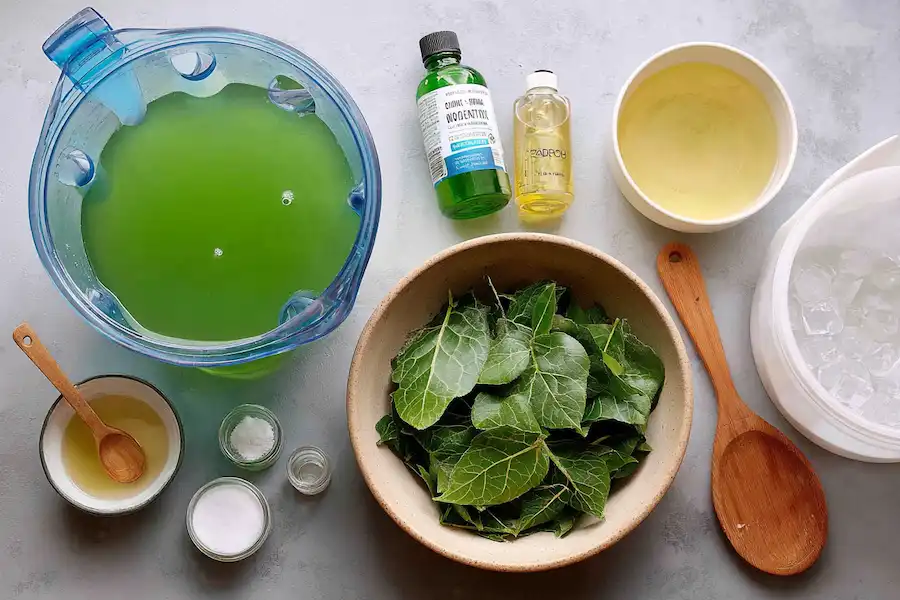
Pour the strained liquid into a large container and add 2 liters of water. This dilution balances the detergent’s strength and helps create a better texture.
4. Add Salt and Baking Soda
Stir in 2 tablespoons each of salt and baking soda:
-
Salt acts as a preservative and thickener, enhancing cleaning efficiency.
-
Baking soda improves degreasing, balances pH levels, and thickens the solution.
Mix thoroughly until these ingredients dissolve completely.
5. Mix in Liquid Dish Detergent
Slowly pour your liquid dish detergent into the mixture while stirring steadily. This gradual addition helps the detergent thicken uniformly and develop rich foam. Use about 200 to 250 ml, the same amount as a normal dishwashing load.
As you stir, watch the solution thicken, become smoother, and create a luscious foam, signaling that your homemade detergent is ready.
6. Test the Consistency and Scent
The final product should be a thick, green detergent with a pleasant fresh scent and a rich foamy texture. It should perform on par with commercial detergents or even better, thanks to the natural enzymes and added ingredients.
How to Store Your Homemade Detergent
Pour your finished detergent into clean bottles—recycled dish soap containers or 2-liter bottles work great. This recipe makes about 4 liters, providing a generous supply for regular household use.
Thanks to the salt and baking soda, your detergent can last up to 2 months when stored in a cool, dry place away from direct sunlight. Proper storage prevents curdling or loss of effectiveness, making this a convenient and long-lasting cleaning solution.
Best Uses for Papaya Leaf Detergent
This versatile detergent is perfect for a variety of household tasks:
-
Washing dishes effectively, cutting through grease and food residue
-
Cleaning kitchen countertops, sinks, and stovetops
-
Whitening and refreshing cloths, towels, and even delicate fabrics
-
General household cleaning including bathroom surfaces and floors
It produces ample foam and tackles tough stains without harsh chemicals, making it ideal for daily cleaning chores in eco-conscious homes.
Extra Tip: How to Clean Your Blender After Use
If you worry about lingering papaya leaf smell in your blender, fill it with water and add a splash of vinegar. Let it soak for 3–4 hours, then rinse thoroughly. This simple trick neutralizes odors and keeps your blender fresh for the next use.
Why This Natural Detergent Is a Smart Choice
Making your own detergent with papaya leaves is an excellent way to embrace sustainability. You reduce plastic waste, limit exposure to synthetic chemicals, and make use of a natural resource that often goes unused. Beyond saving money, you’re contributing to a greener household and healthier environment.
Whether you want to cut down on cleaning costs, minimize chemical exposure, or simply enjoy DIY projects, this papaya leaf detergent is a clever, effective, and rewarding solution.
Disclaimer: This detergent is intended for household use only. Always perform a patch test on a small area or fabric before full application. Avoid contact with eyes and keep out of reach of children. If you have sensitive skin or allergies, wear gloves when handling the detergent.
News in the same category

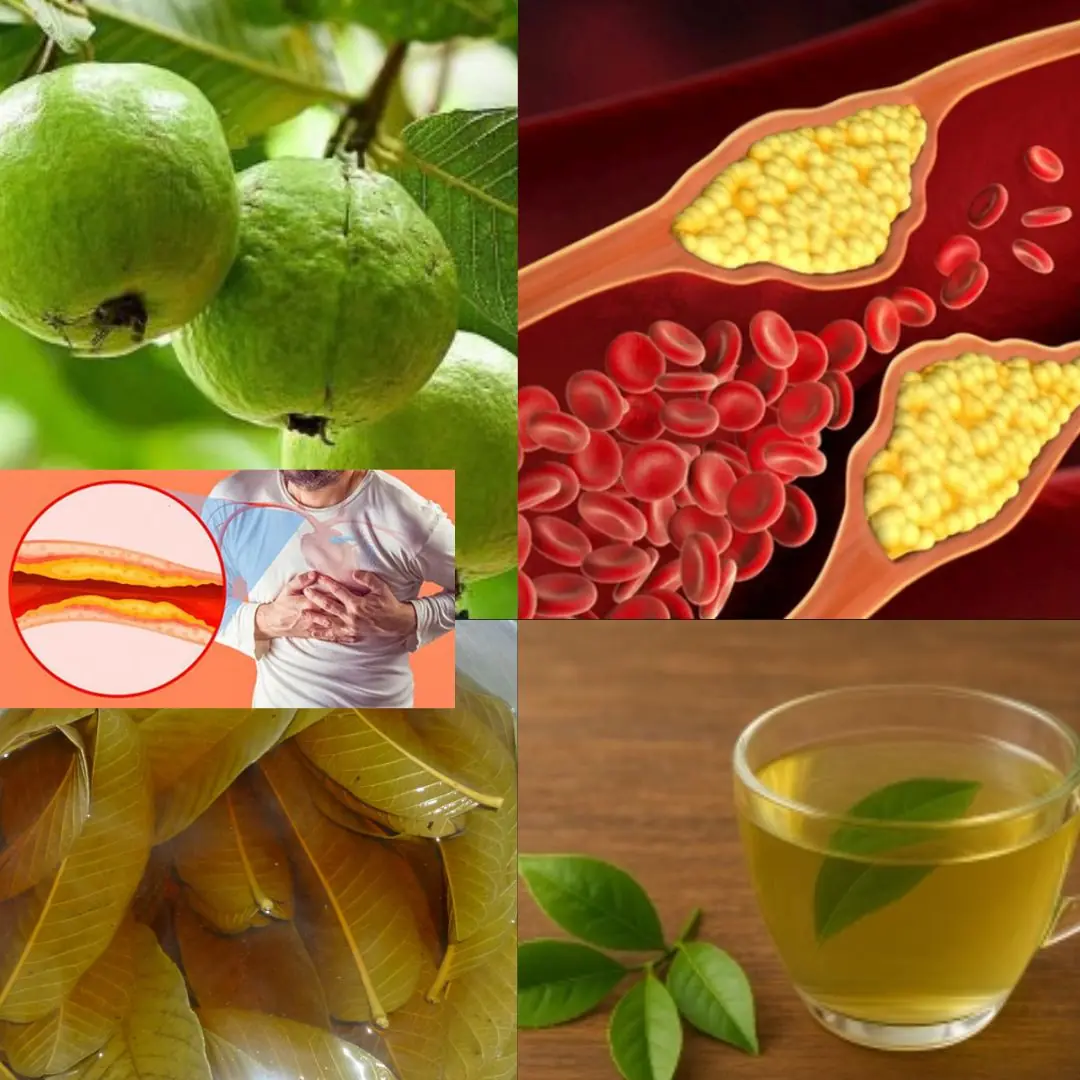
The Best Tea for Mornings and After Dinner: A Powerful Blend for Health
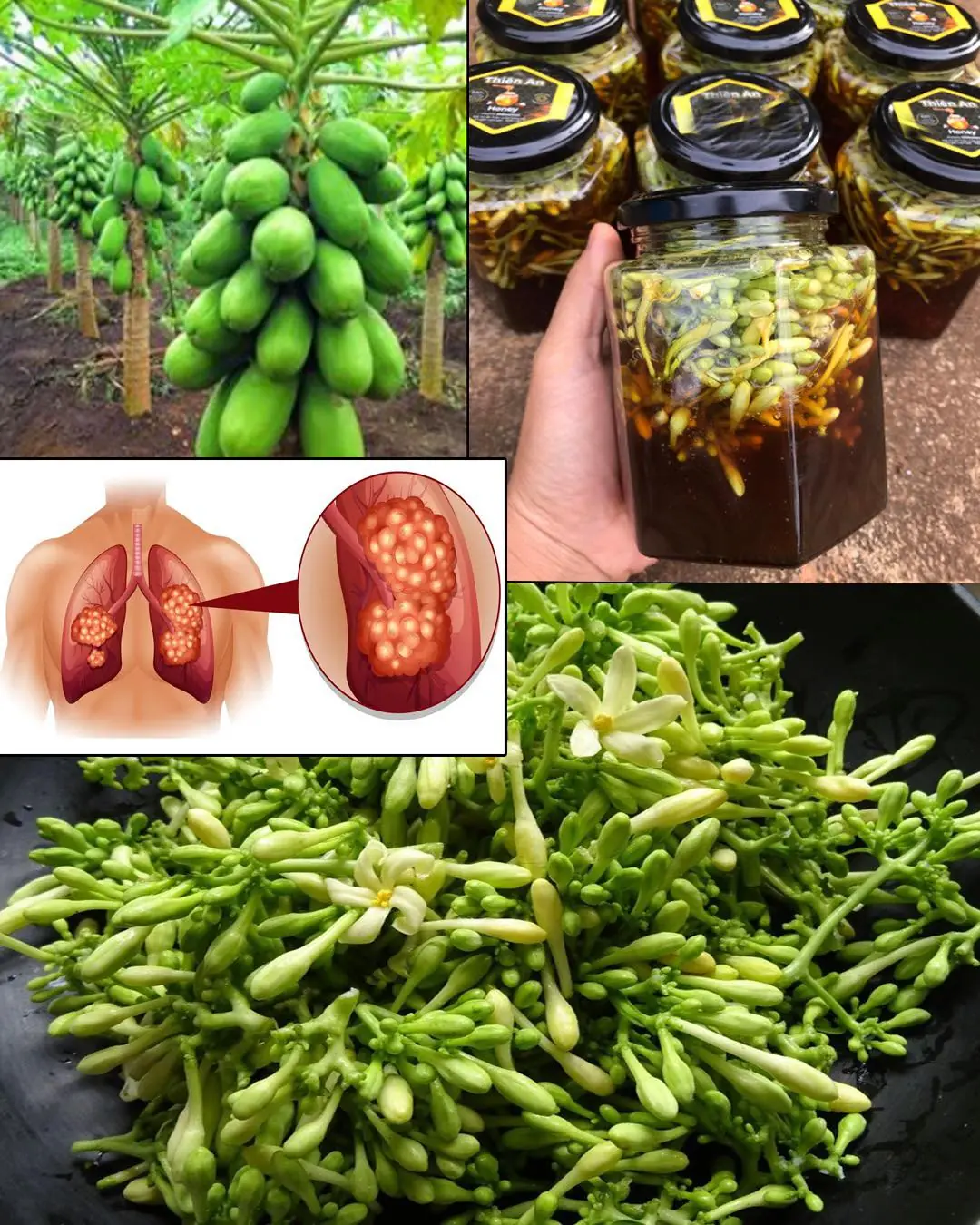
Benefits and Uses of Papaya Flowers Soaked in Honey
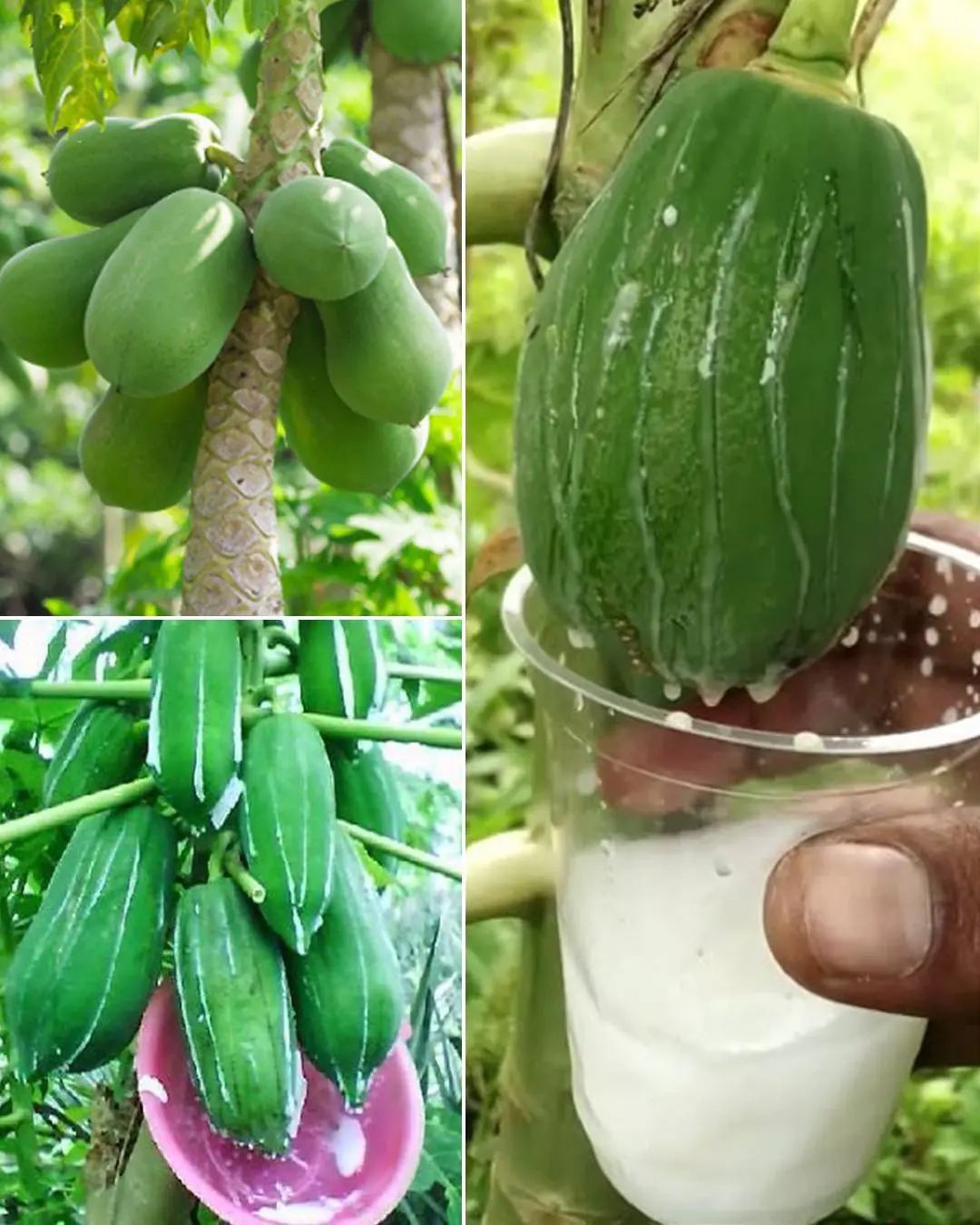
Papaya releases a milky sap, but most people don’t realize how important it is
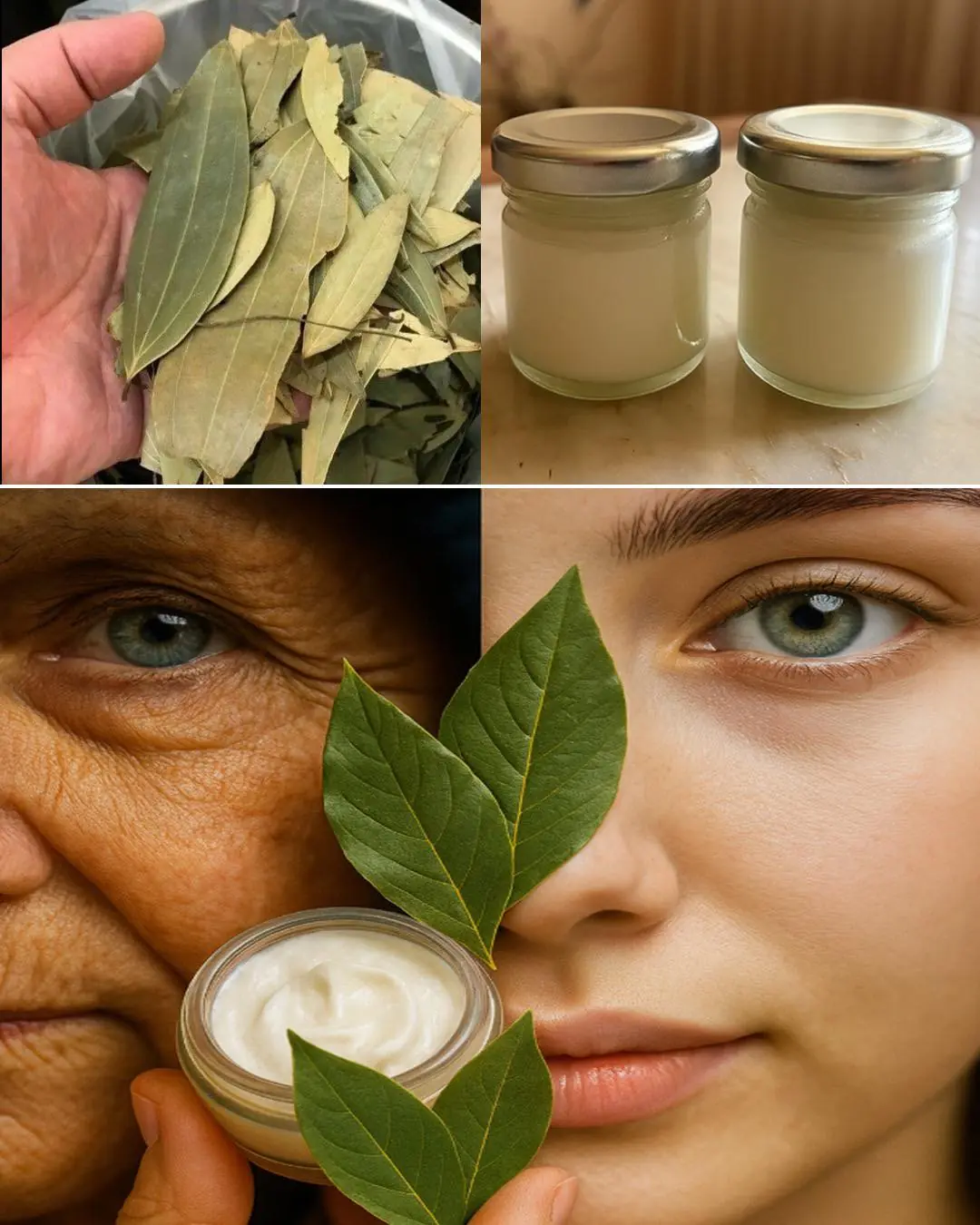
Bay Leaf – Nature’s Secret Against Wrinkles and Fine Lines
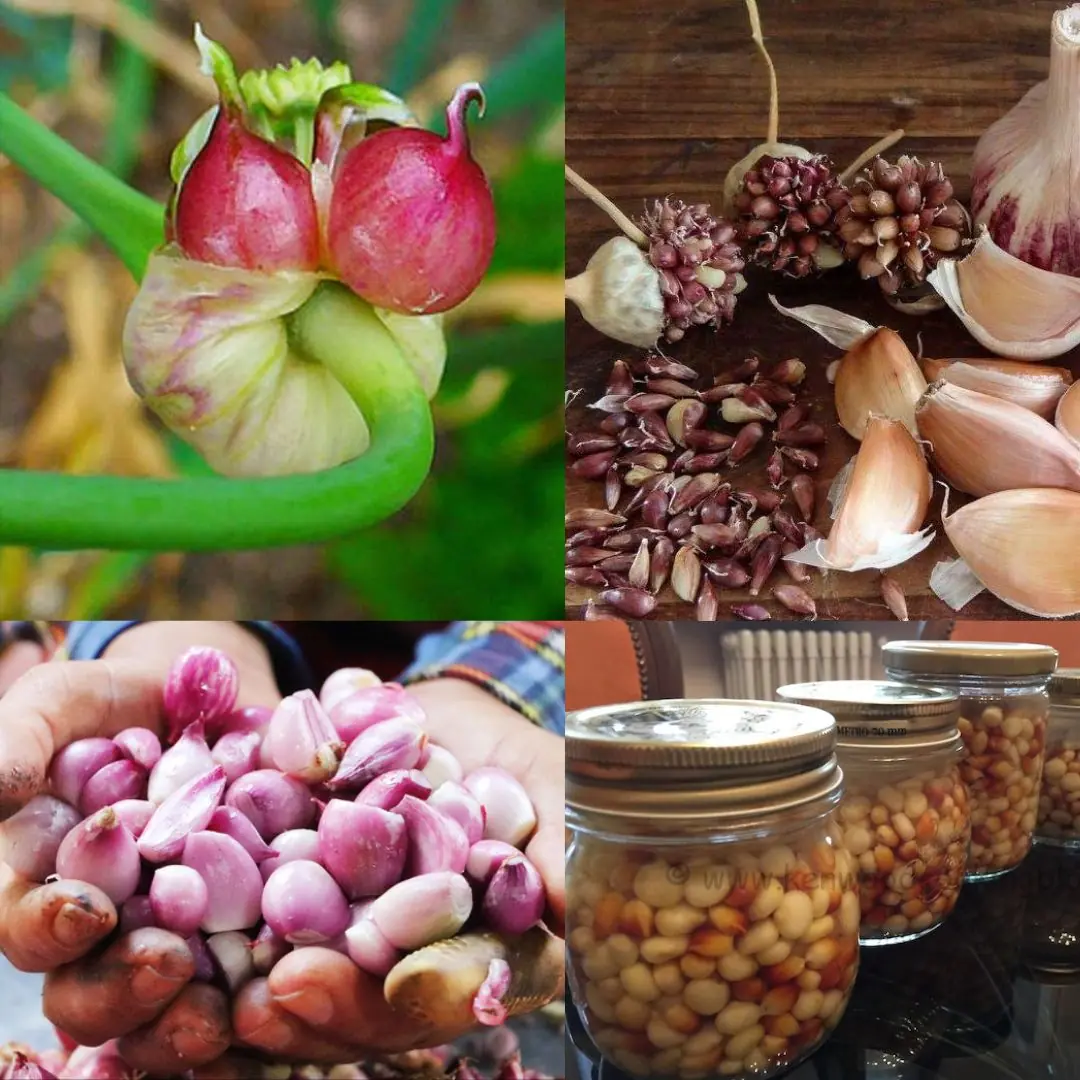
The Hidden Power of Garlic Bulbils: Nature’s Tiny Healing Pearls
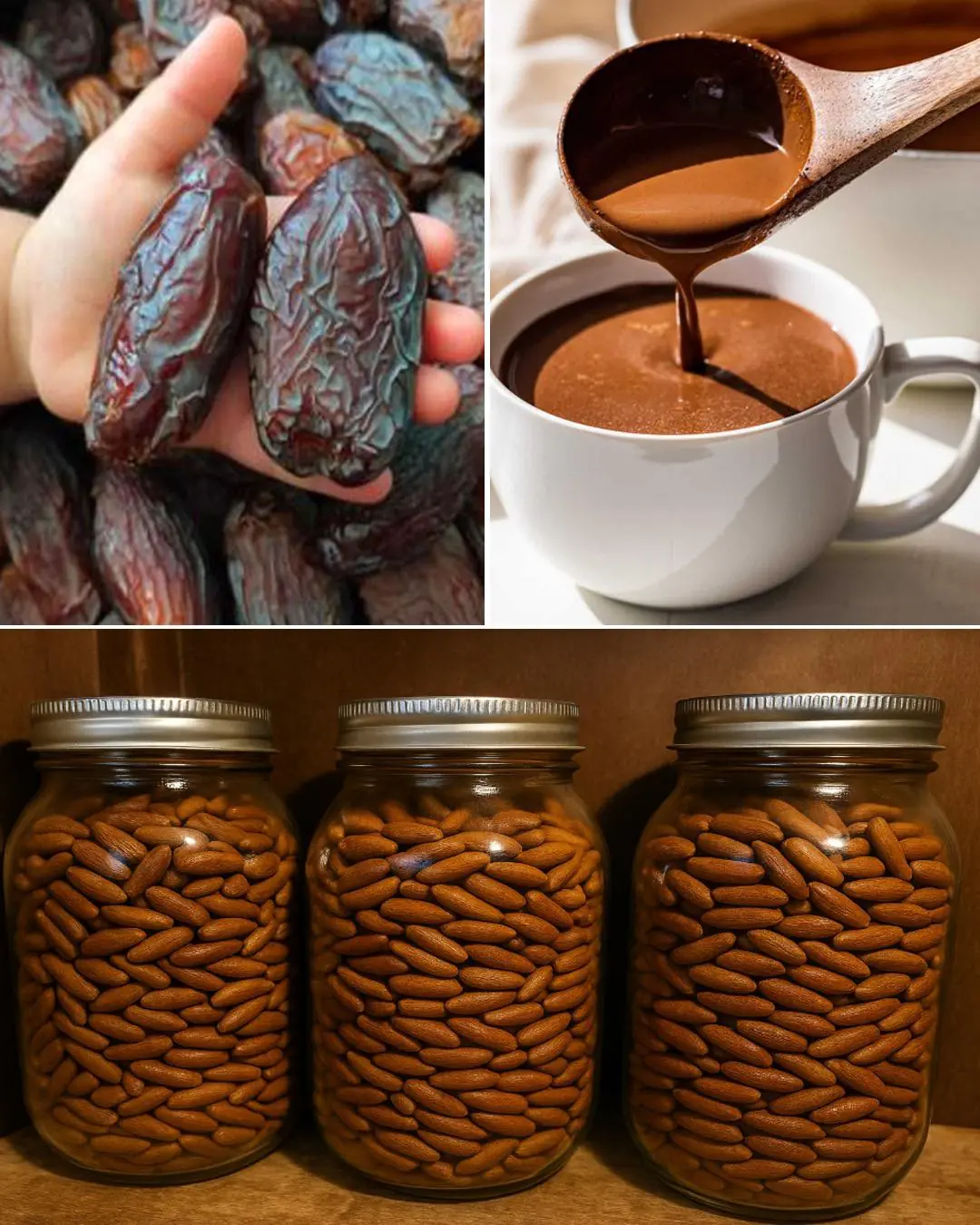
Date Seeds Benefits: The Superfood Ingredient with incredible health benefits
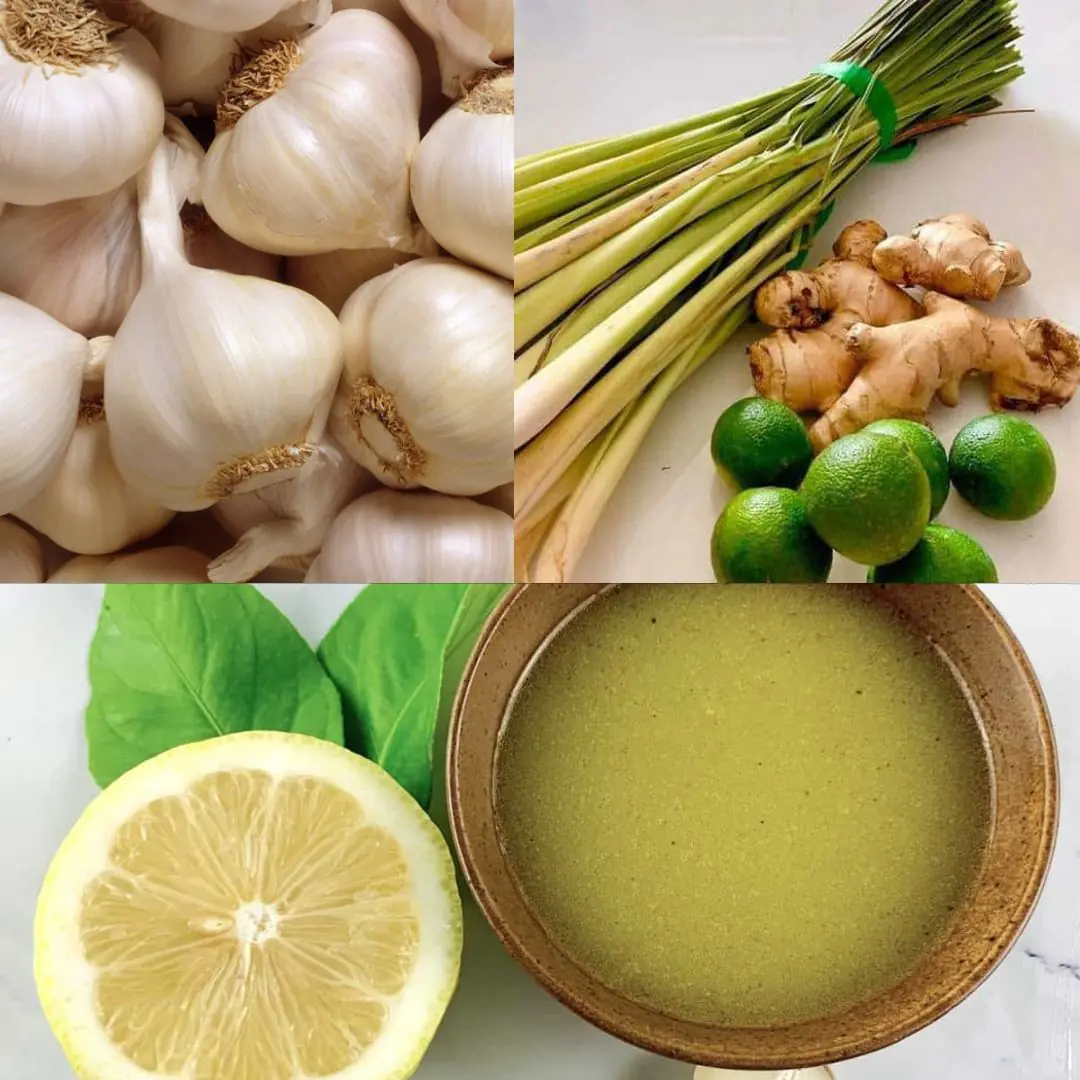
Unlock The Incredible Health Benefits of Garlic, Ginger and Lemon for Men
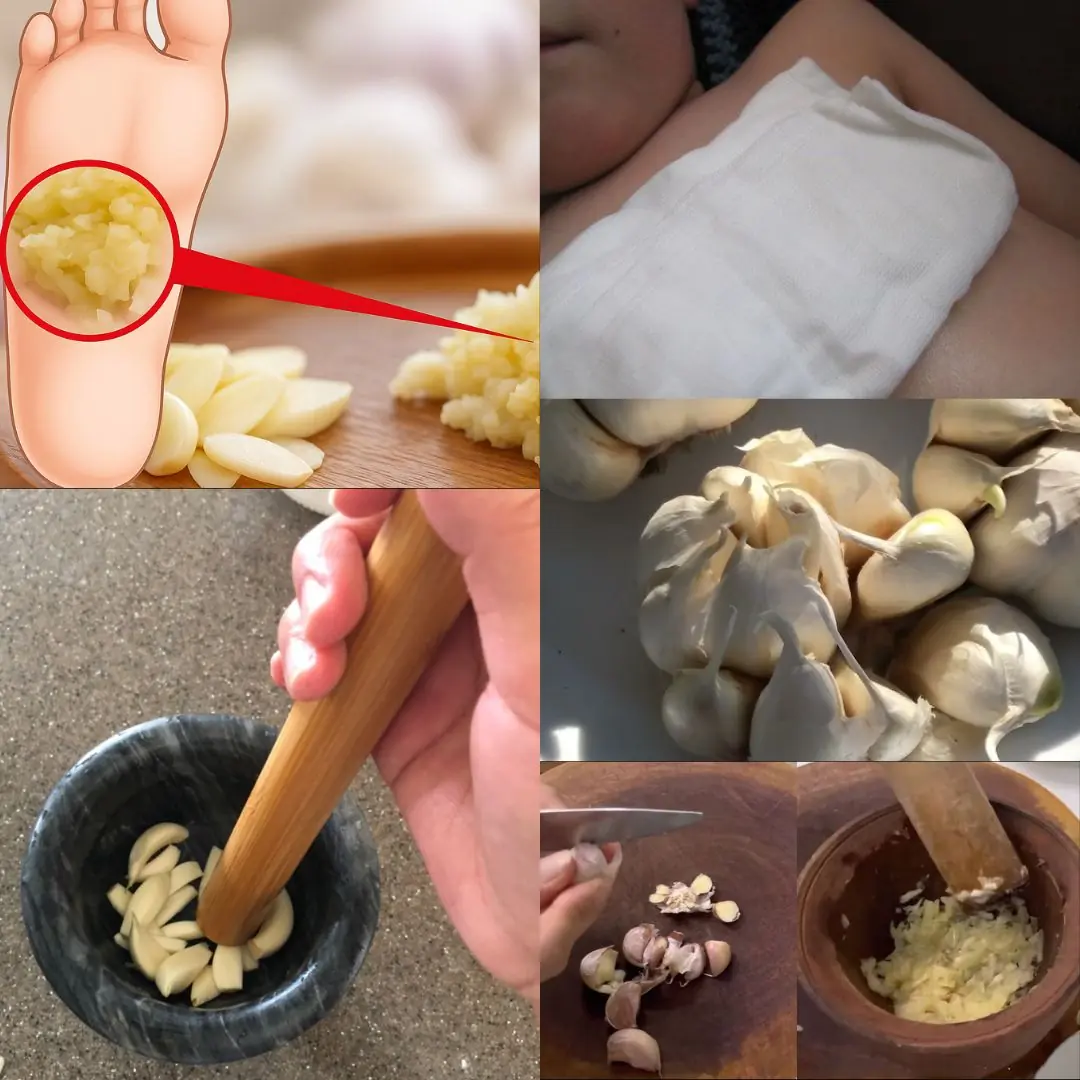
Garlic Poultice: A Powerful Remedy for Both Kids and Adults

Burning Sage: What It Is, How to Do It, and Why It Might Help You
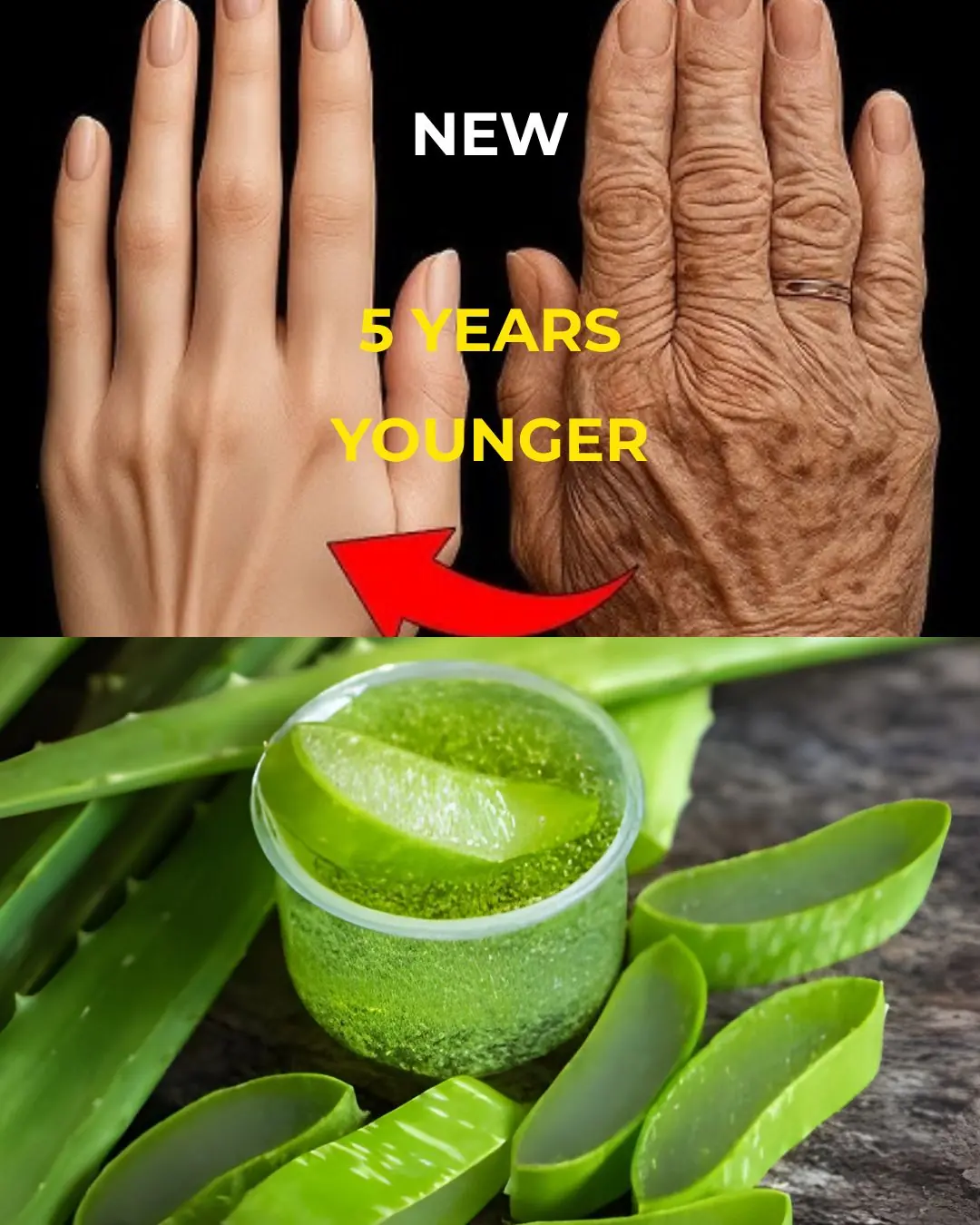
My Grandmother Looks 35 at 67 – Her Secret? Collagen + Aloe Vera Clever Tricks
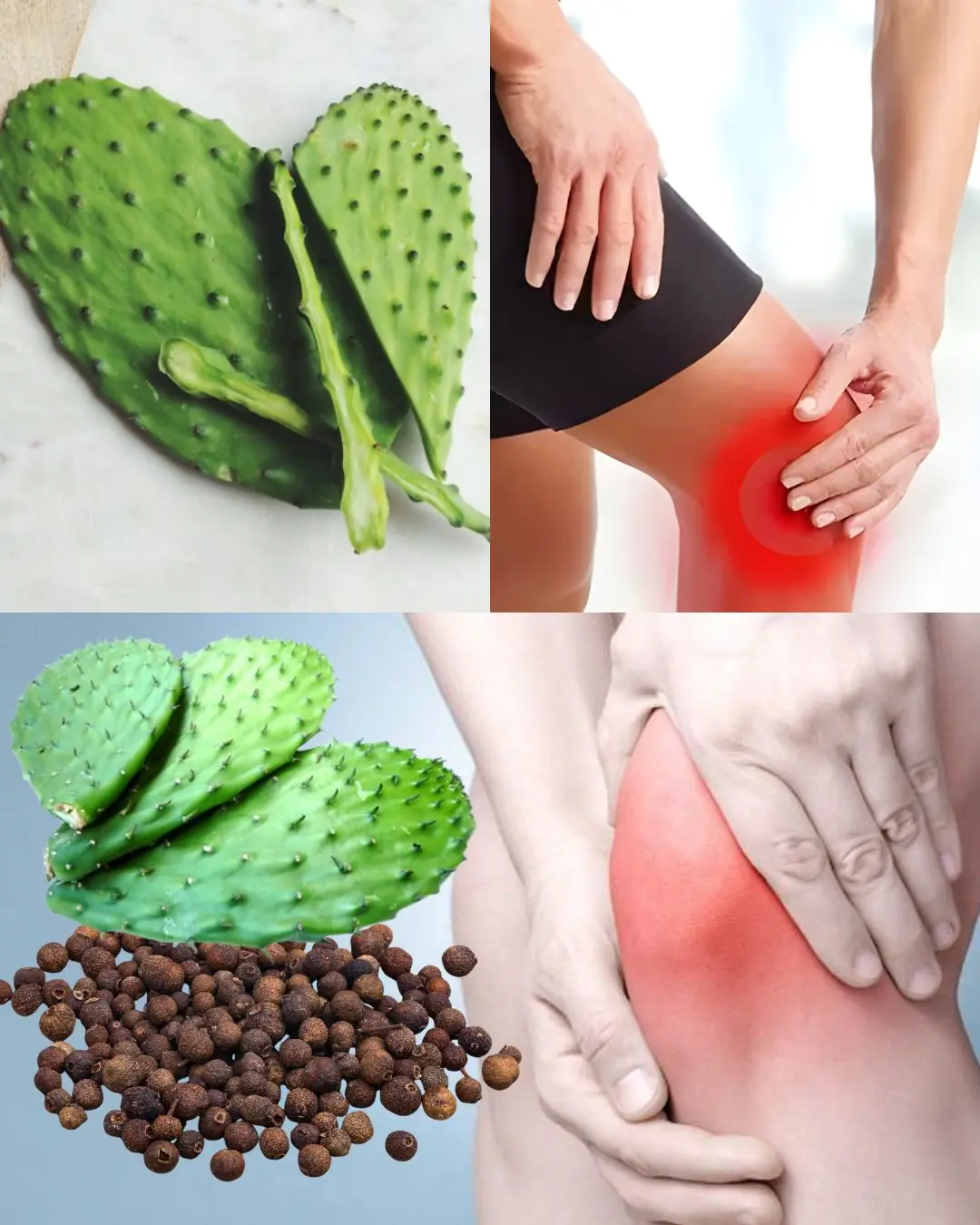
Anti-Inflammatory Power: Relieve Joint Swelling and Bone Pain with Prickly Pear (Nopal) Water 🌿💧
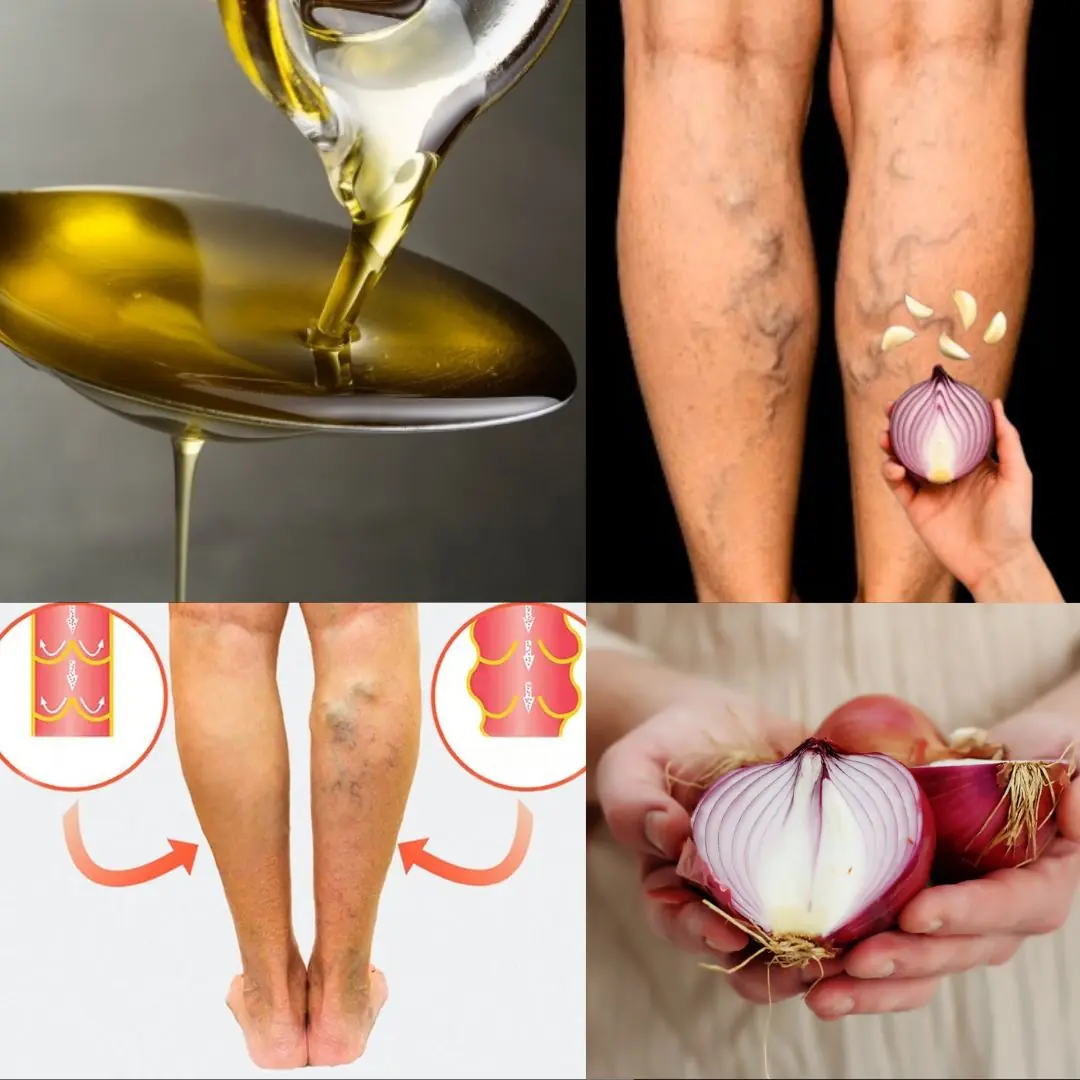
Onion, Garlic, and Olive Oil Remedy for Varicose Veins: Natural Treatment and Benefits
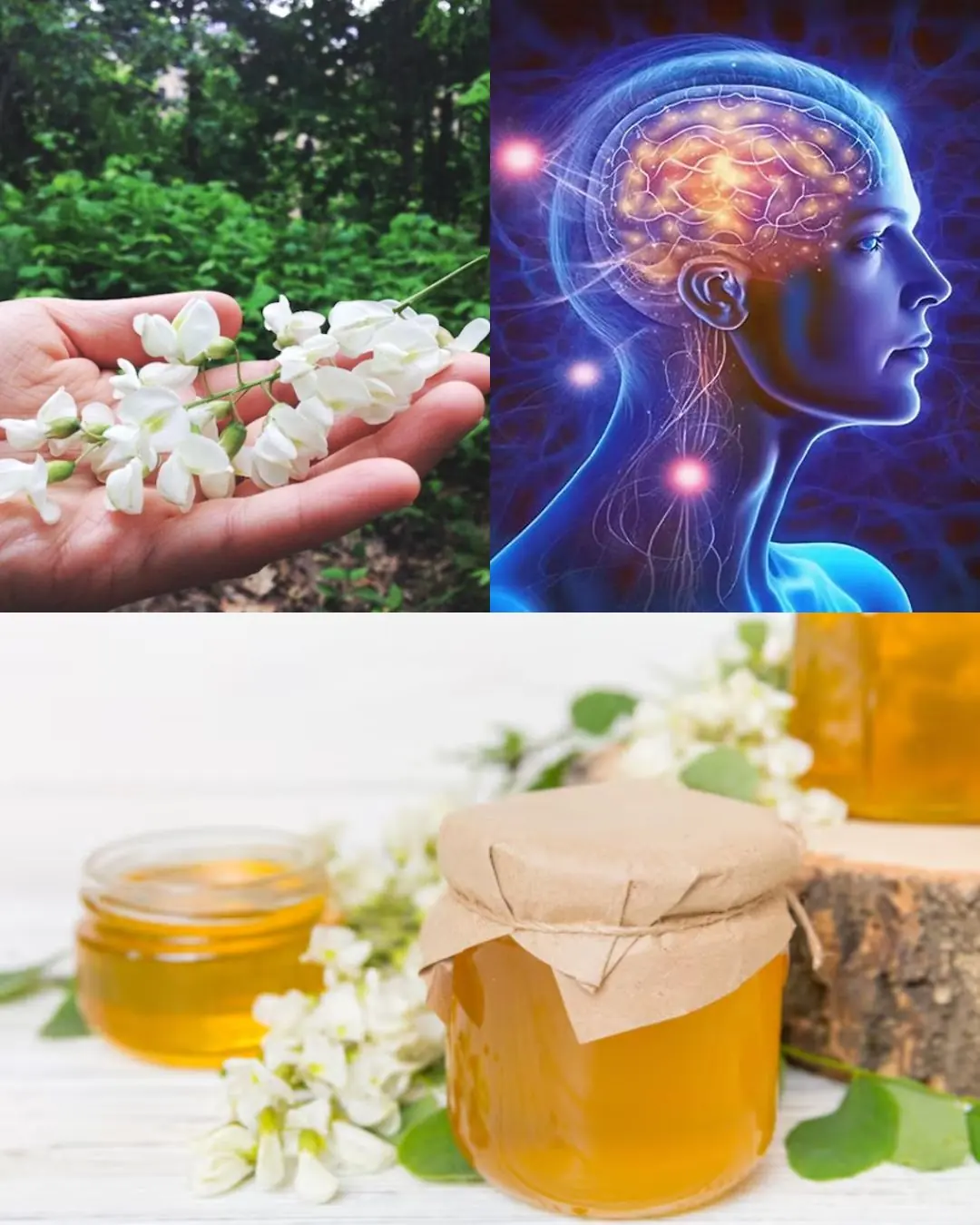
Black Locust (Robinia pseudoacacia): 14 Surprising Benefits and How to Use It at Home
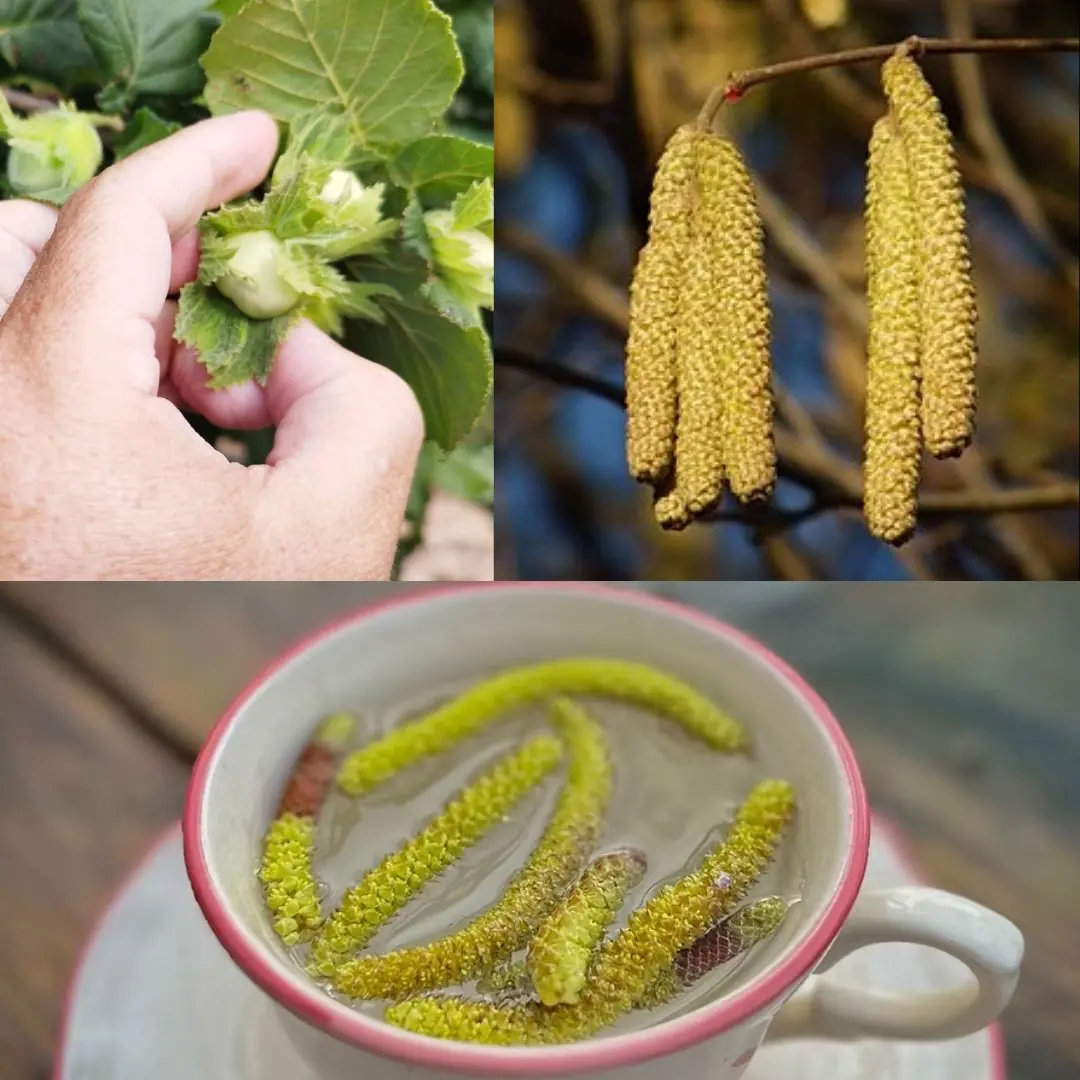
Discover the Hidden Power of Hops for Health and Home Remedies
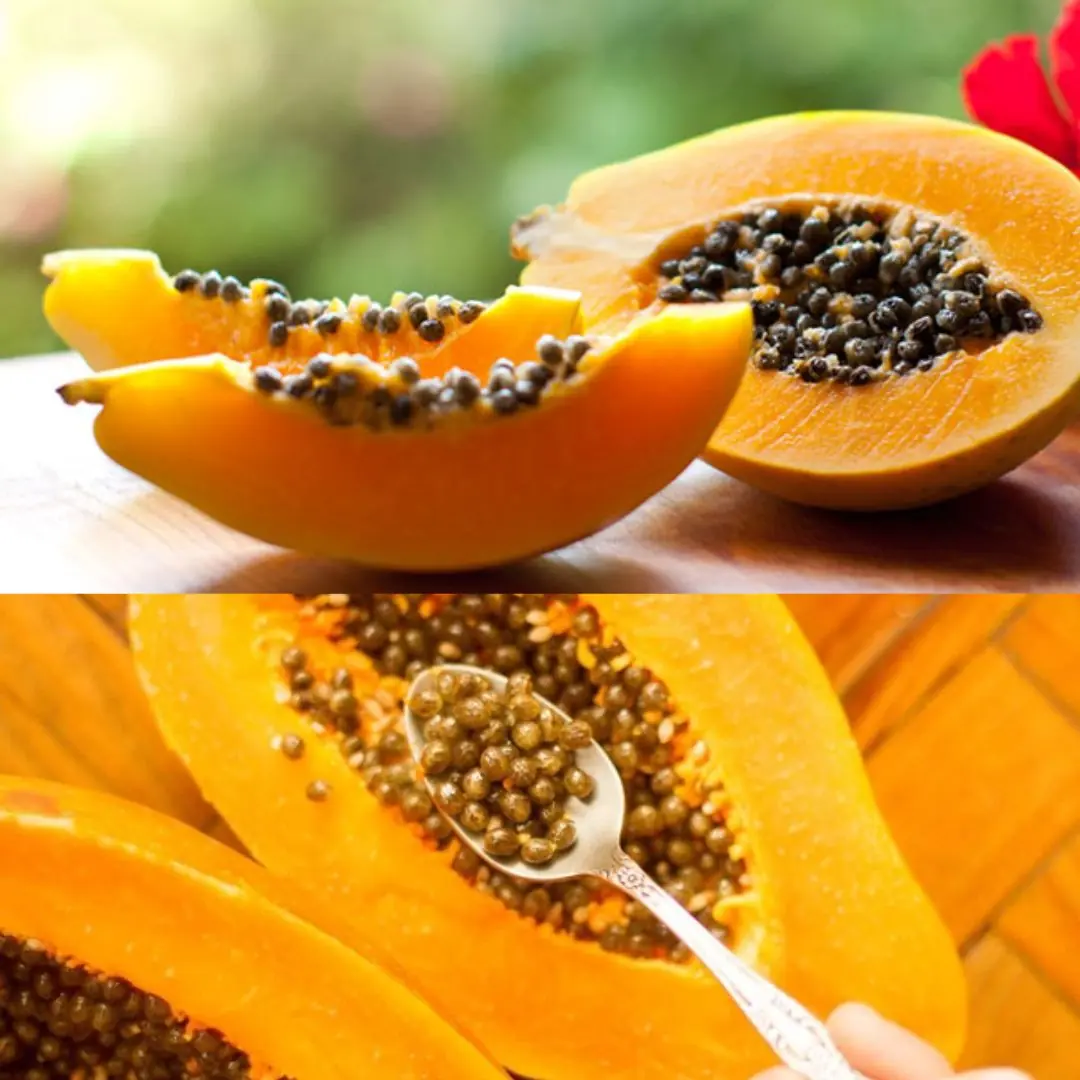
The Powerful Health Benefits of Papaya Seeds: Why You Should Include Them in Your Diet
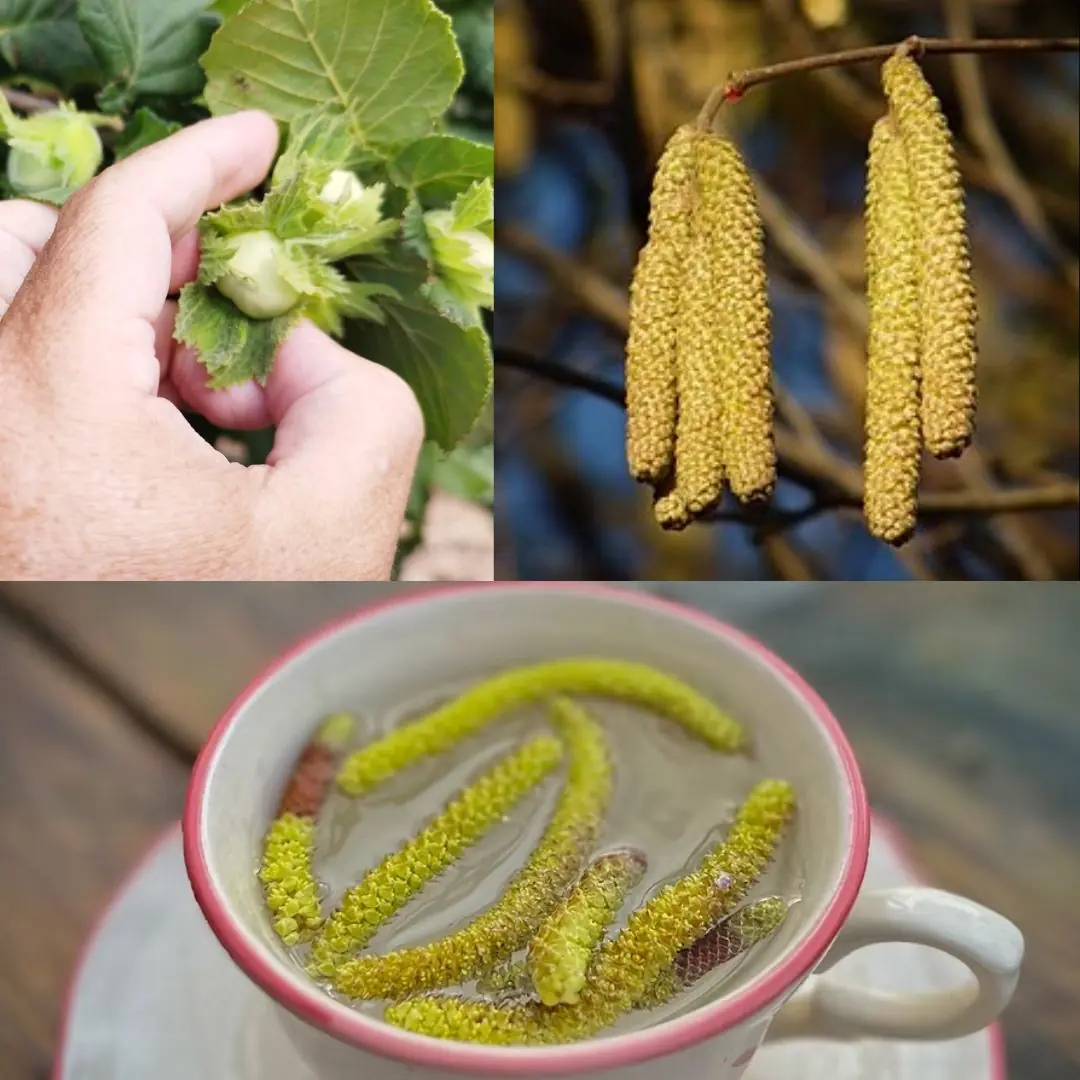
The Wonderful Hazel Tree (Corylus avellana): Nutrition, Healing, and Traditional Uses of Every Part
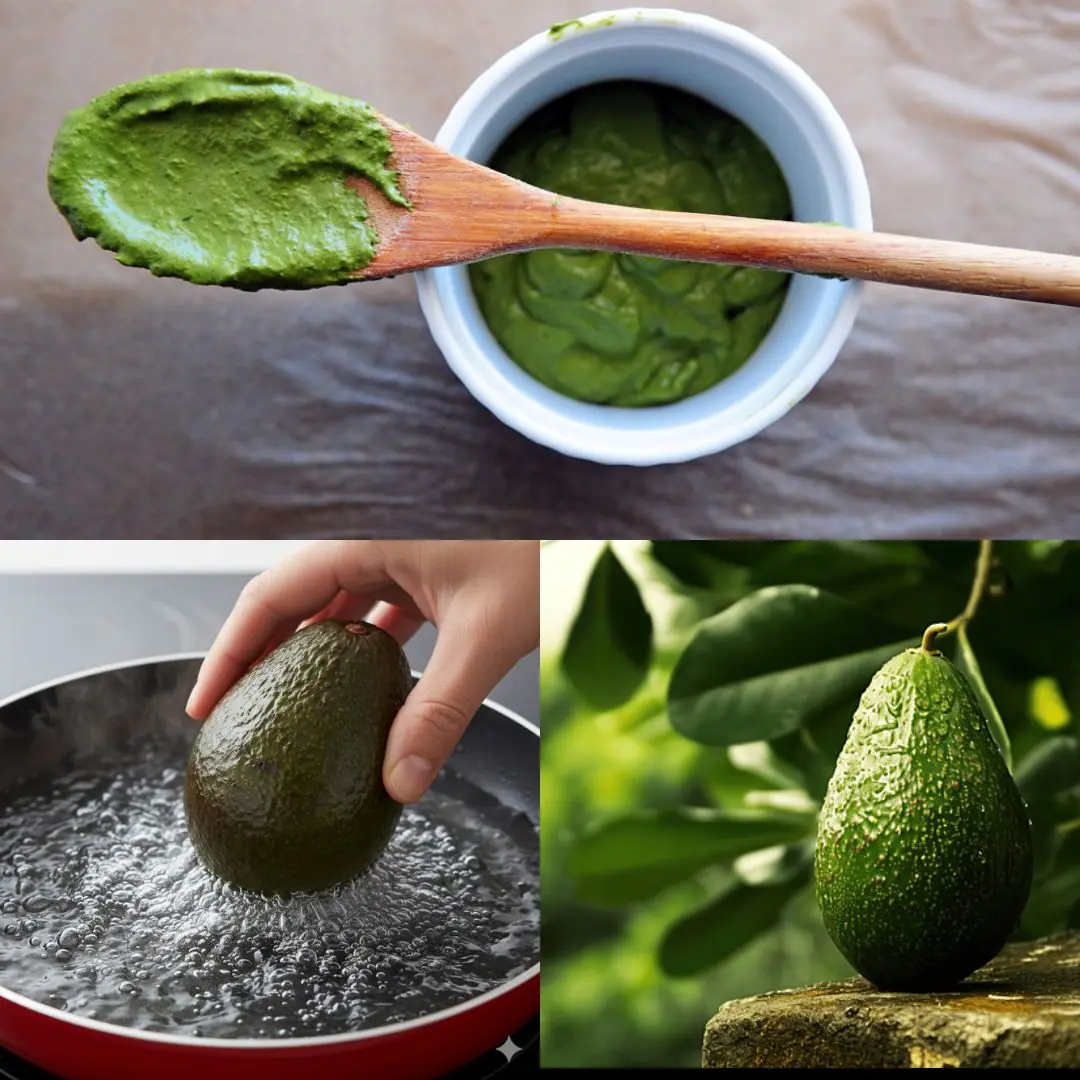
Boiling a Whole Avocado: The Secret to Softness, Nutrition, and a Delicious Baked Recipe
News Post

Push-Ups and Kindness: How One Deputy Reached a Boy’s Heart.
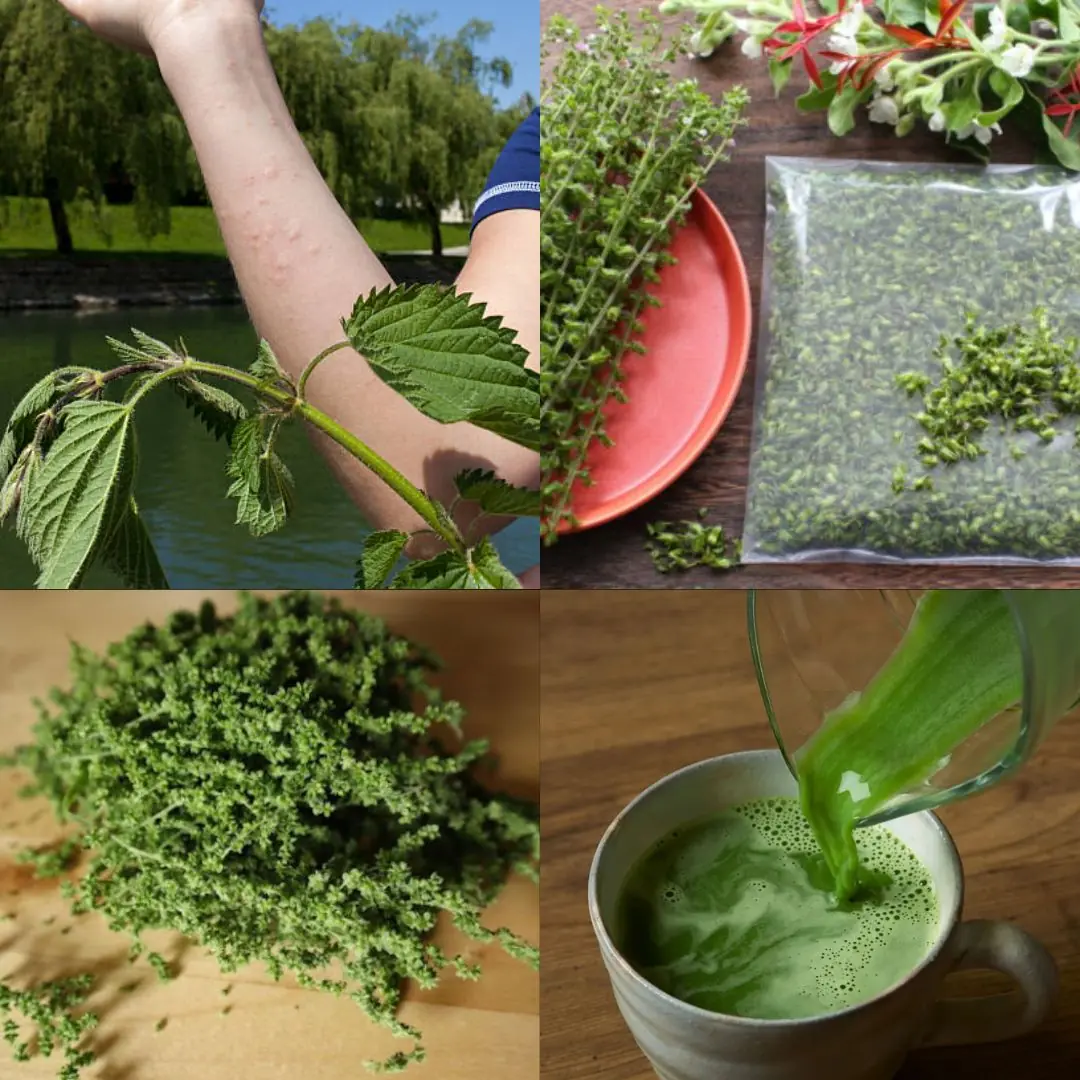
The Power of Urtica dioica: Natural Relief for Joint Pain, Arthritis, and Inflammation

The Woman at the Post Office: A Lesson in Beauty and Humanity.

James Spann: A Birthday, An Anniversary, and a Lifetime of Love

“For Alan” — A Family’s Fight Against Hemimelia

A Simple Breakfast, a Powerful Reminder: Strangers Bridge the Divide with Kindness

Garlic, Honey, and Cloves – a powerful natural remedy packed with health benefits
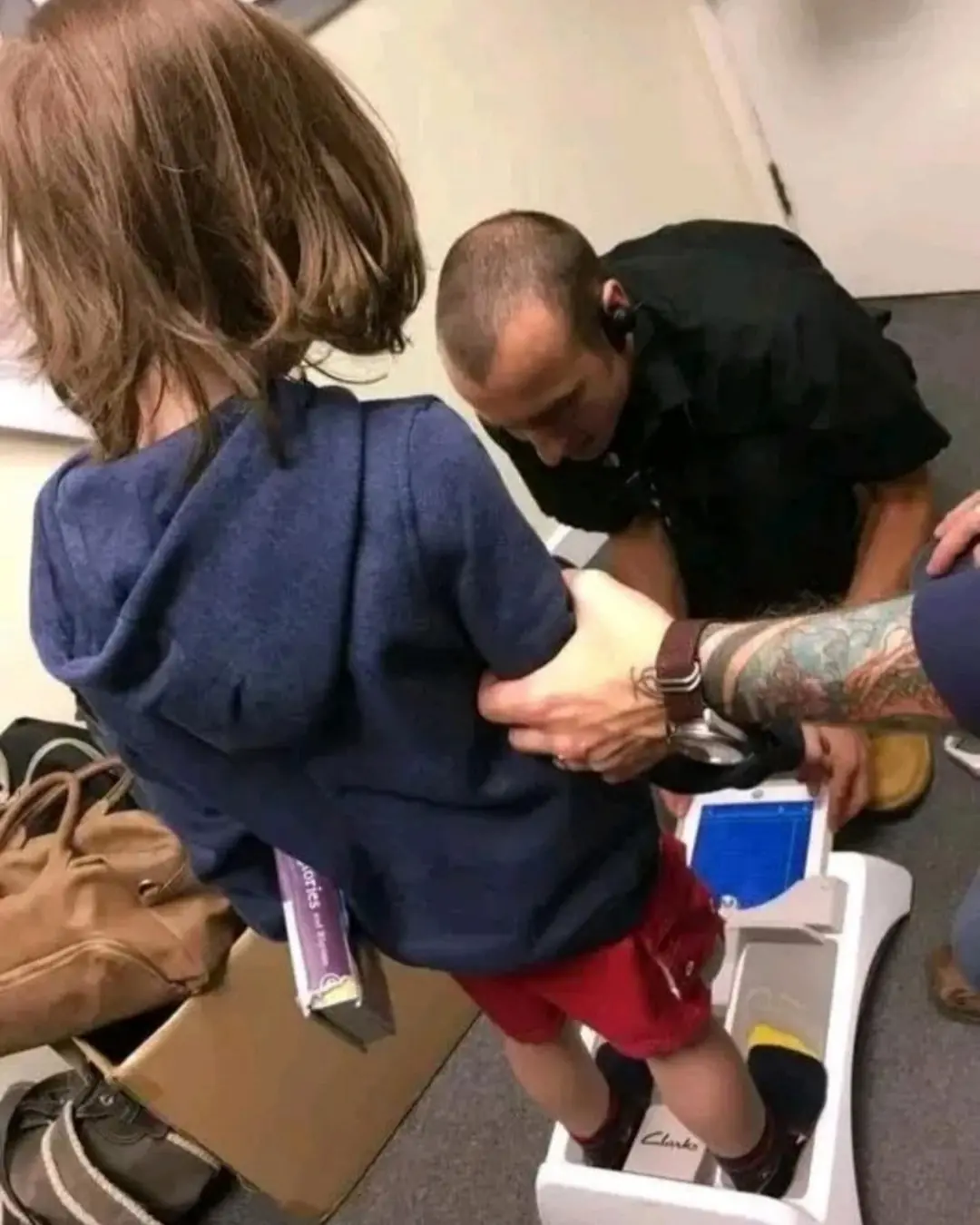
A Quiet Room, a Kind Heart, and a Pair of Shoes

From Fear to Home: A Shelter Dog’s Journey to Love

A Chance Encounter in California Reunites Hero and the Boy He Saved 13 Years Ago

The Best Tea for Mornings and After Dinner: A Powerful Blend for Health

The Goldfish Alligator: A Florida Kid's Wild Attempt at Luring a Reptile

Benefits and Uses of Papaya Flowers Soaked in Honey

The Wiener Dog and the Bear: A Friendship Lost and Found in the Mountains

Papaya releases a milky sap, but most people don’t realize how important it is

Bay Leaf – Nature’s Secret Against Wrinkles and Fine Lines

The Hidden Power of Garlic Bulbils: Nature’s Tiny Healing Pearls

Date Seeds Benefits: The Superfood Ingredient with incredible health benefits

Unlock The Incredible Health Benefits of Garlic, Ginger and Lemon for Men
